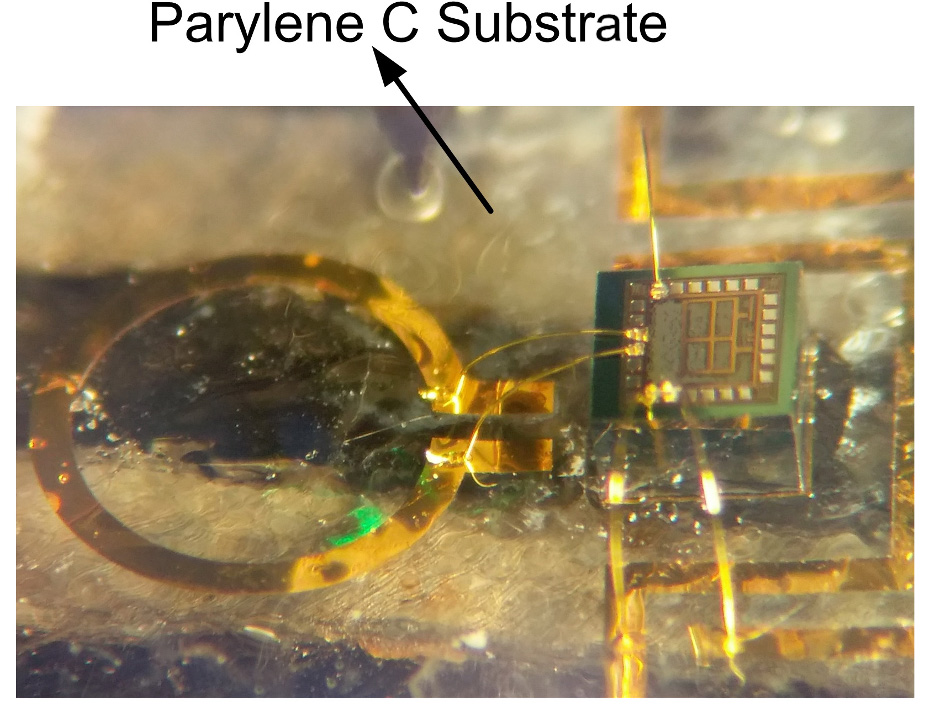Aug 5 2020
Innovators from Purdue University have been working on inventions to utilize microchip technology in implantable devices and other wearable products such as smartwatches to enhance biomedical devices, such as those employed to track people with heart disease and glaucoma.
 A Purdue University team developed a fully implantable transmitter chip for wireless sensor nodes and biomedical devices. Image Credit: Hansraj Bhamra/Purdue University.
A Purdue University team developed a fully implantable transmitter chip for wireless sensor nodes and biomedical devices. Image Credit: Hansraj Bhamra/Purdue University.
The team has designed a completely implantable radio-frequency transmitter chip for biomedical devices and wireless sensor nodes. The study has been published in the IEEE Transactions on Circuits and Systems II journal. The transmitter chip uses the least energy per digital bit reported to date.
The transmitter functions similarly to communication technology in smartwatches and mobile phones. However, the Purdue transmitter exhibits low energy consumption and an unparalleled level of miniaturization, which enable its integration into an eye to track the pressure for a glaucoma patient or into other parts of the body to quantify data related to heart functions.
A transmitter is an integral part of these kinds of devices. It facilitates a wireless communication between the sensor node or biomedical device and a smart phone application. The user can simply operate the device through a smart phone application and receive the biophysiological data in real-time. The transmitter in this case enables a 24-hour intraocular pressure monitoring for glaucoma patients.
Hansraj Bhamra, Research and Development Scientist, Purdue University
Bhamra created this technology when he was a graduate student at Purdue University.
The transmitter chip developed at Purdue functions using the sensor nodes quite similar to how sensors in smart cars and other Internet of Things devices connect via several communication components to realize tasks such as auto-driving.
In addition to being low power, our transmitter operates on wireless power to replace the conventional batteries. Batteries are undesirable since they increase the device size and weight and make it uncomfortable for patients. In addition, the batteries are built of toxic material and require frequent recharging or replacement surgeries.
Pedro Irazoqui, Reilly Professor of Biomedical Engineering and Professor of Electrical and Computer Engineering, Purdue University
The researchers have collaborated with the Purdue Research Foundation Office of Technology Commercialization to patent this and other similar technologies. They are seeking partners to continue the advancement of their technologies.
Moreover, Irazoqui established Bionode, a Purdue-affiliated startup that markets biotechnology and other associated devices.
Journal Reference
Bhamra, H., et al. (2020) An Ultra-Low Power 2.4 GHz Transmitter for Energy Harvested Wireless Sensor Nodes and Biomedical Devices. IEEE Transactions on Circuits and Systems II. doi.org/10.1109/TCSII.2020.3005332.
Source: https://www.purdue.edu/